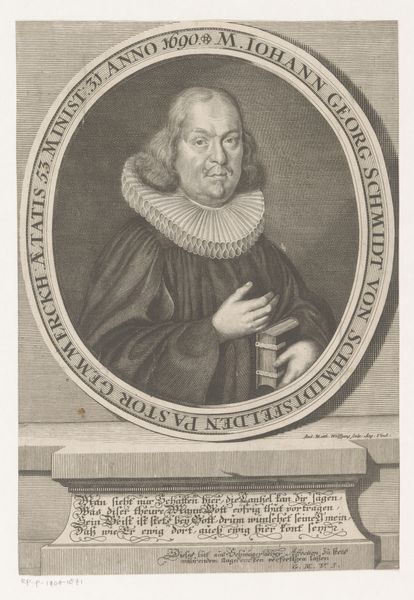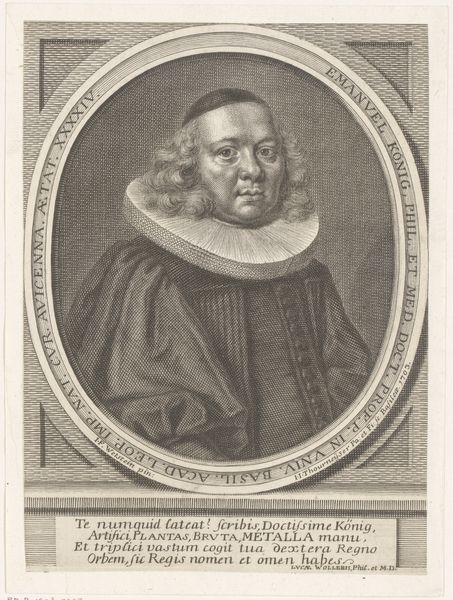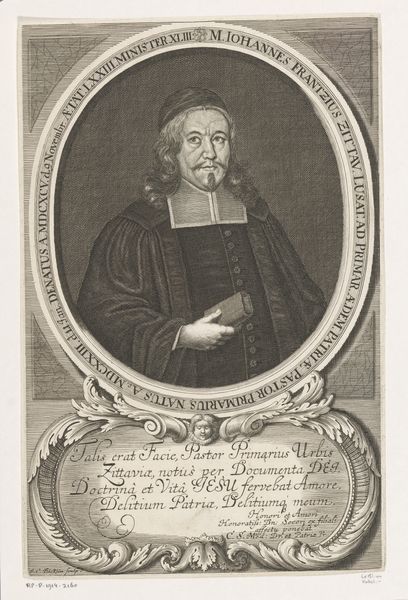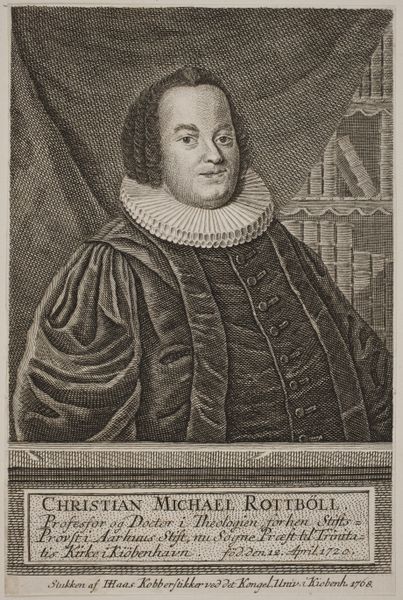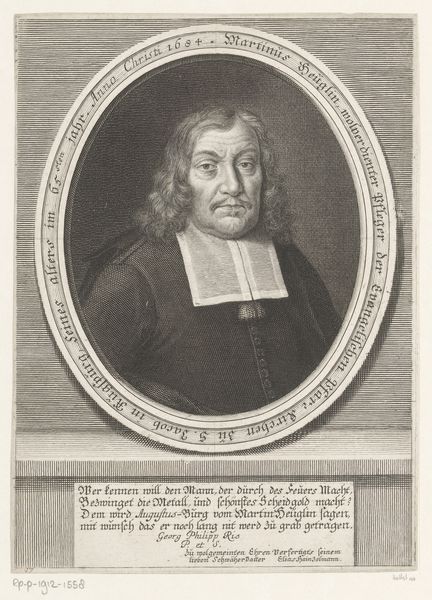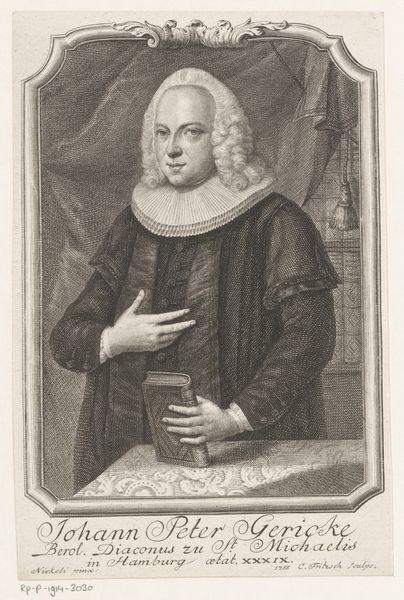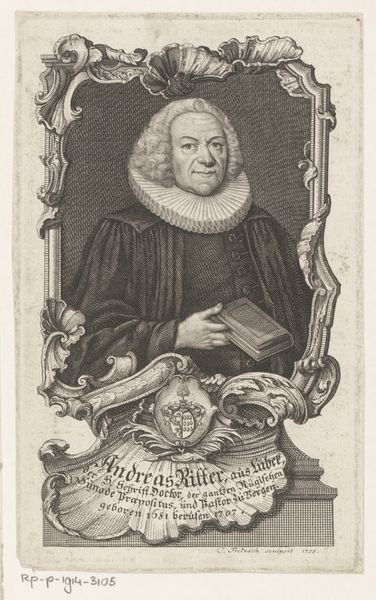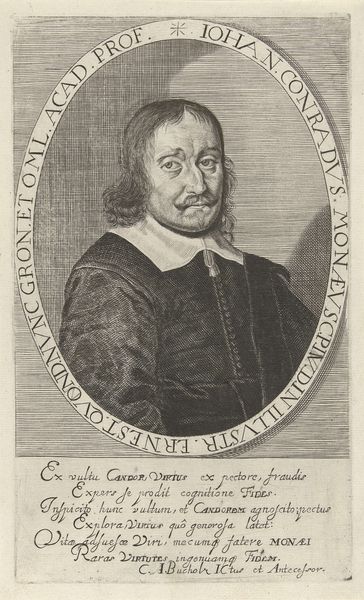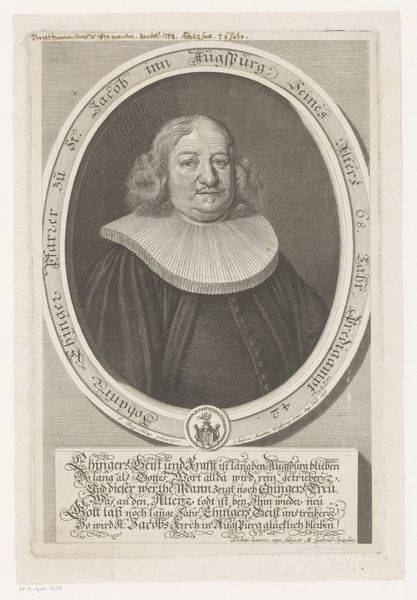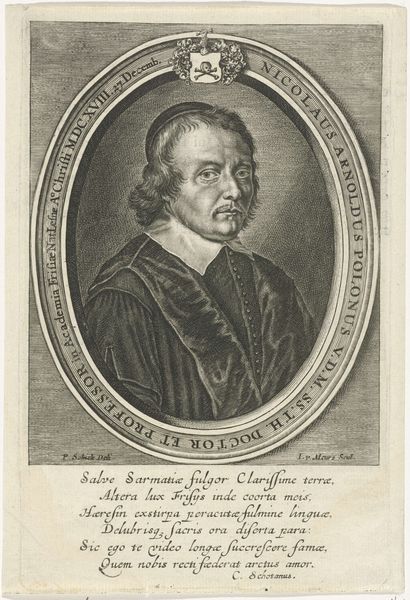
engraving
#
portrait
#
baroque
#
old engraving style
#
portrait drawing
#
engraving
Dimensions: height 293 mm, width 179 mm
Copyright: Rijks Museum: Open Domain
This portrait of Johann Christoph Zerbst was made in the 18th century by Jakob Petrus, probably as an engraving. Zerbst, a General Superintendent, is framed by an elaborate oval border containing inscriptions that speak to his birth and death, as well as his virtues. The culture of portraiture in 18th-century Europe was deeply intertwined with social status and power. Portraits served as a means of commemorating individuals, but also of conveying messages about their position in society, their piety, and their learning. This portrait is typical of its time in the way it presents Zerbst as a figure of authority and respectability. His formal attire, the book he holds, and the detailed inscription all contribute to this image. To fully understand this work, we can turn to historical records, genealogical information, and studies of religious and social structures in 18th-century Germany. This enables us to see how art is always embedded in specific social and institutional circumstances.
Comments
No comments
Be the first to comment and join the conversation on the ultimate creative platform.
